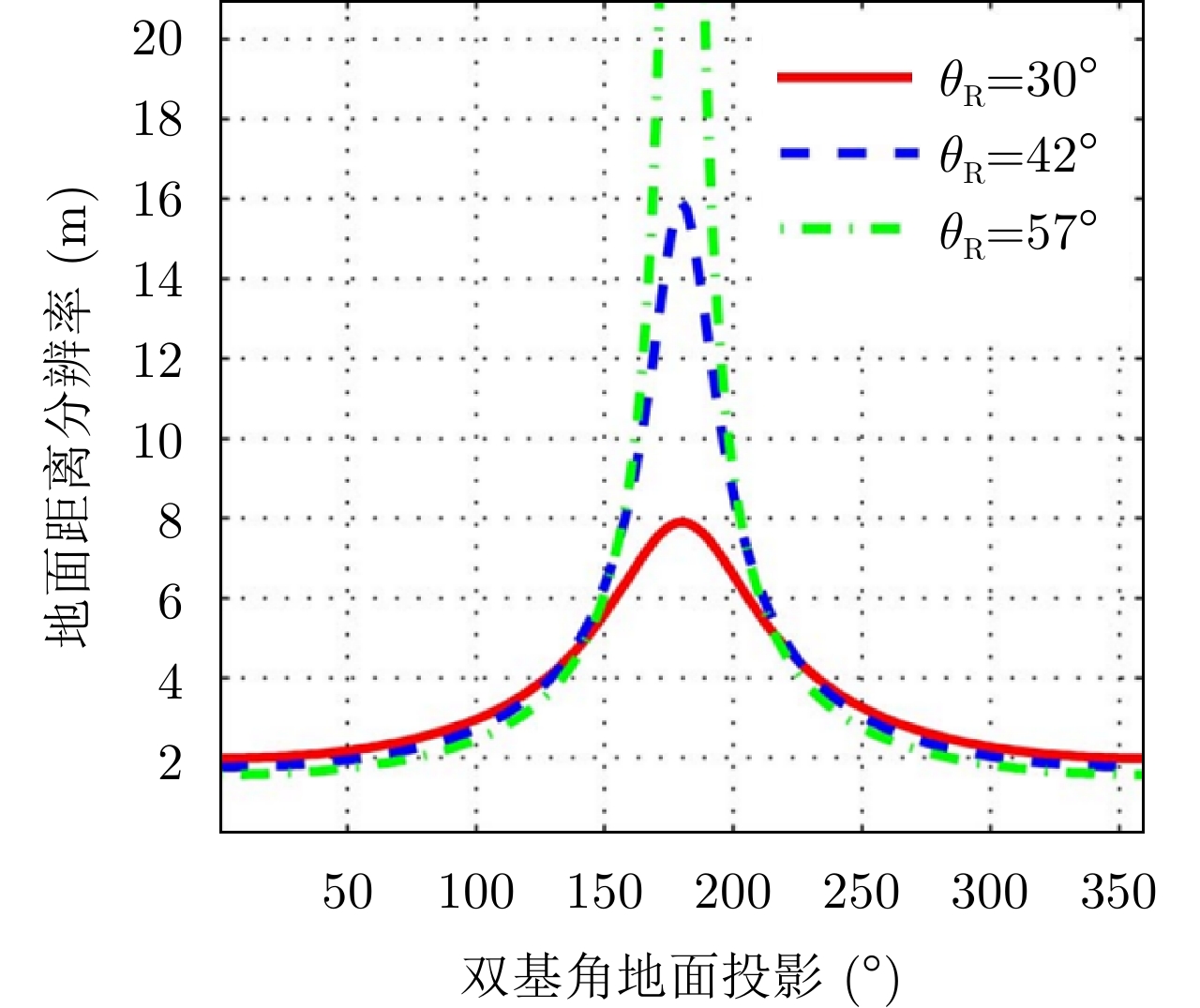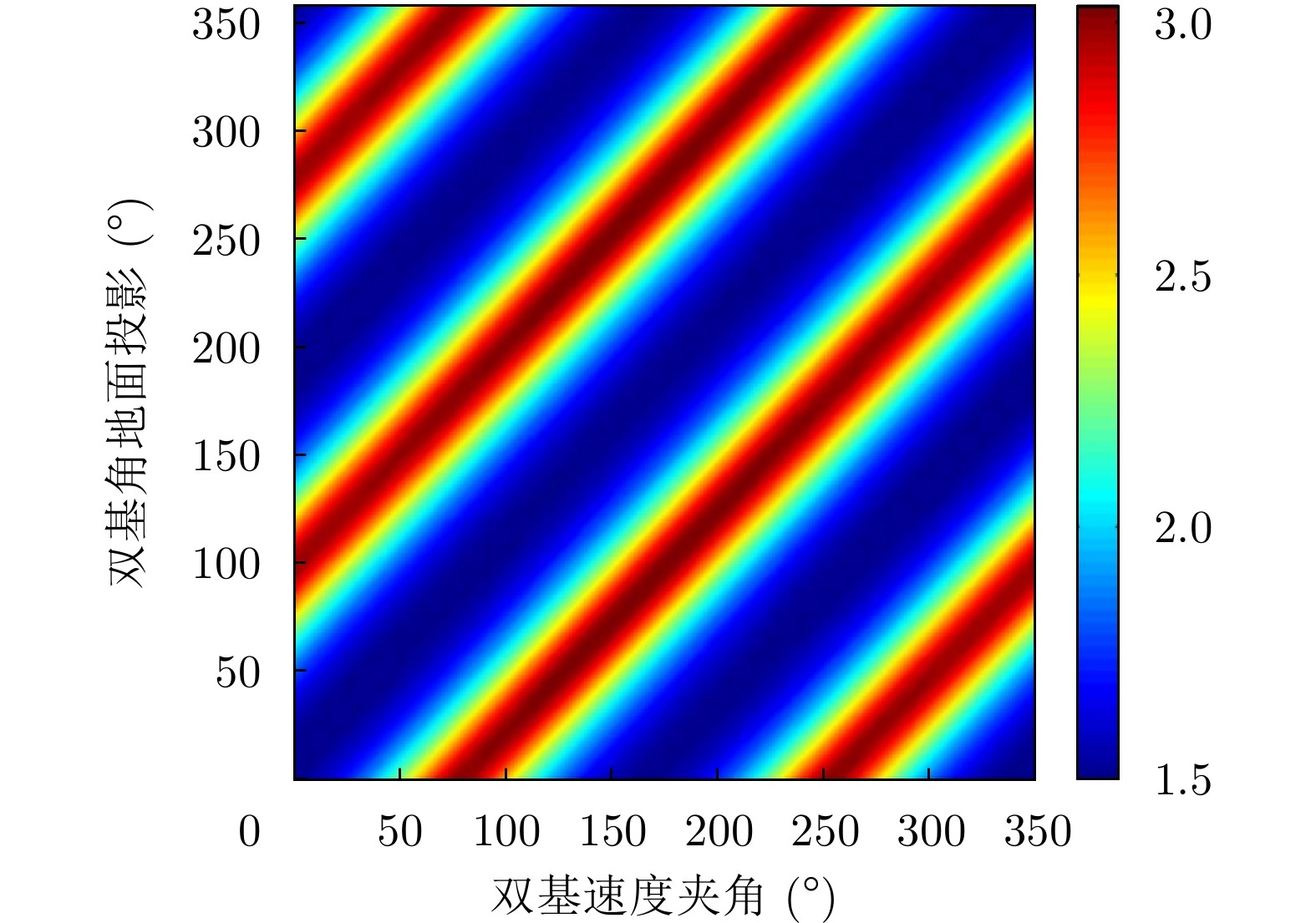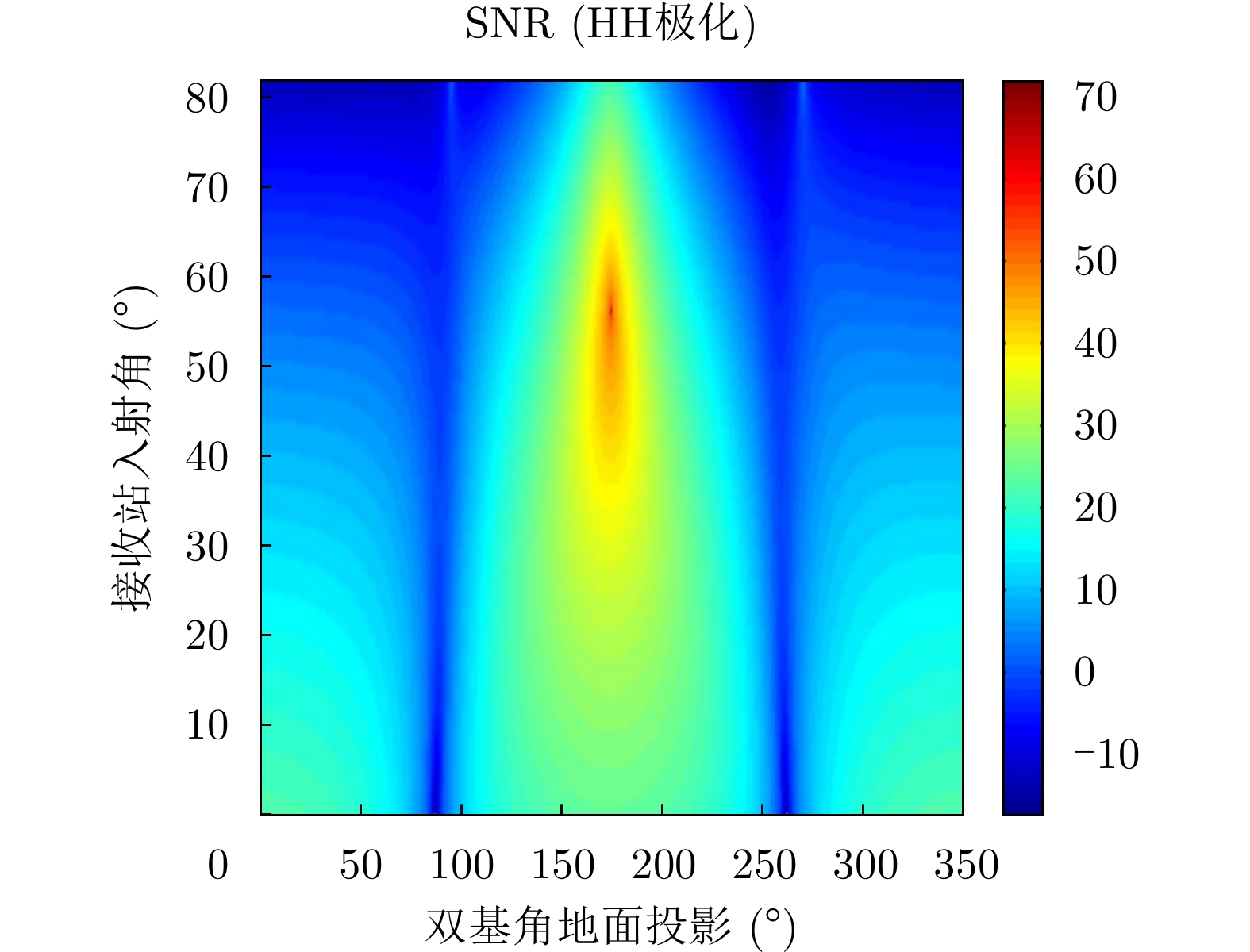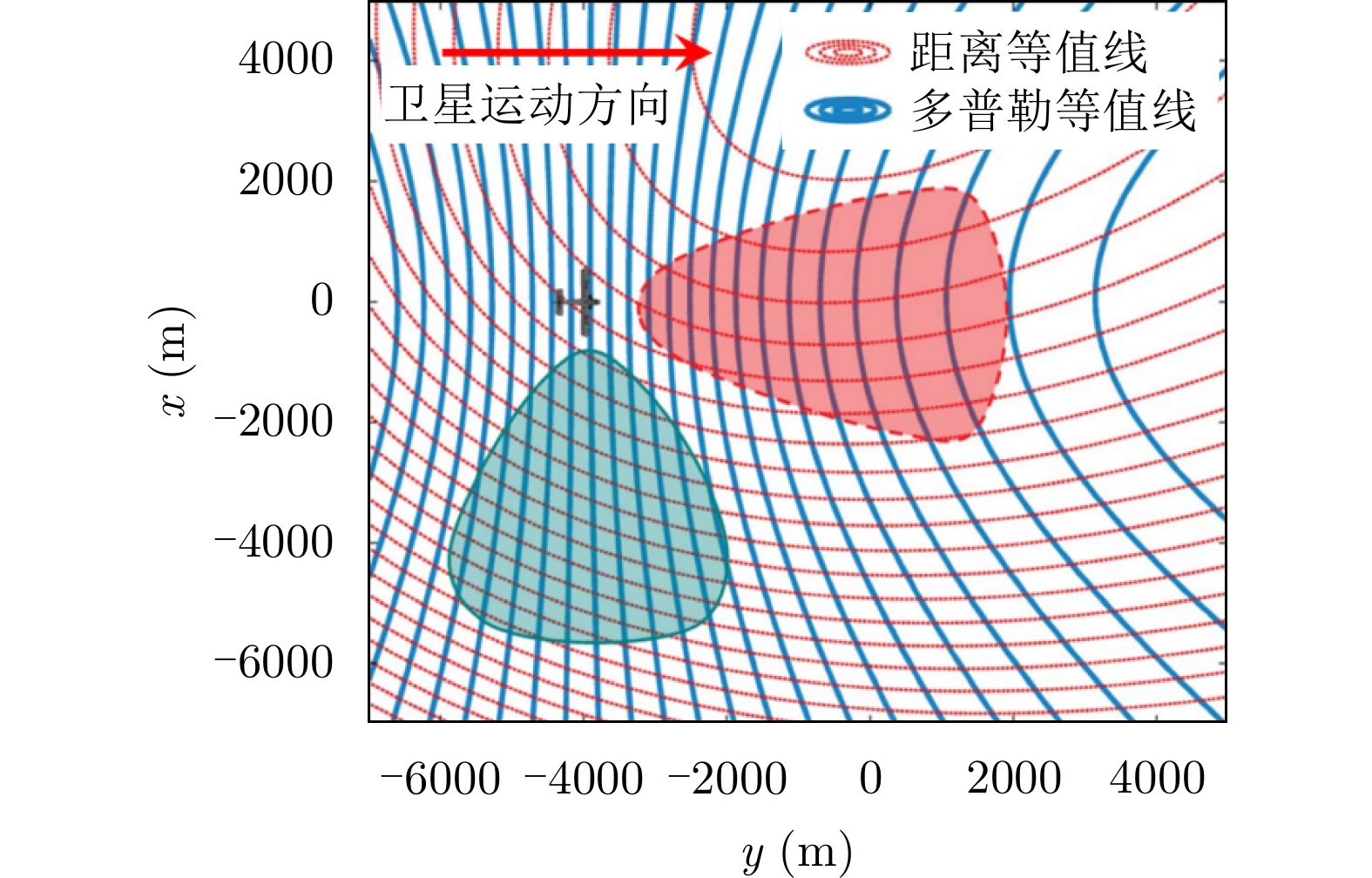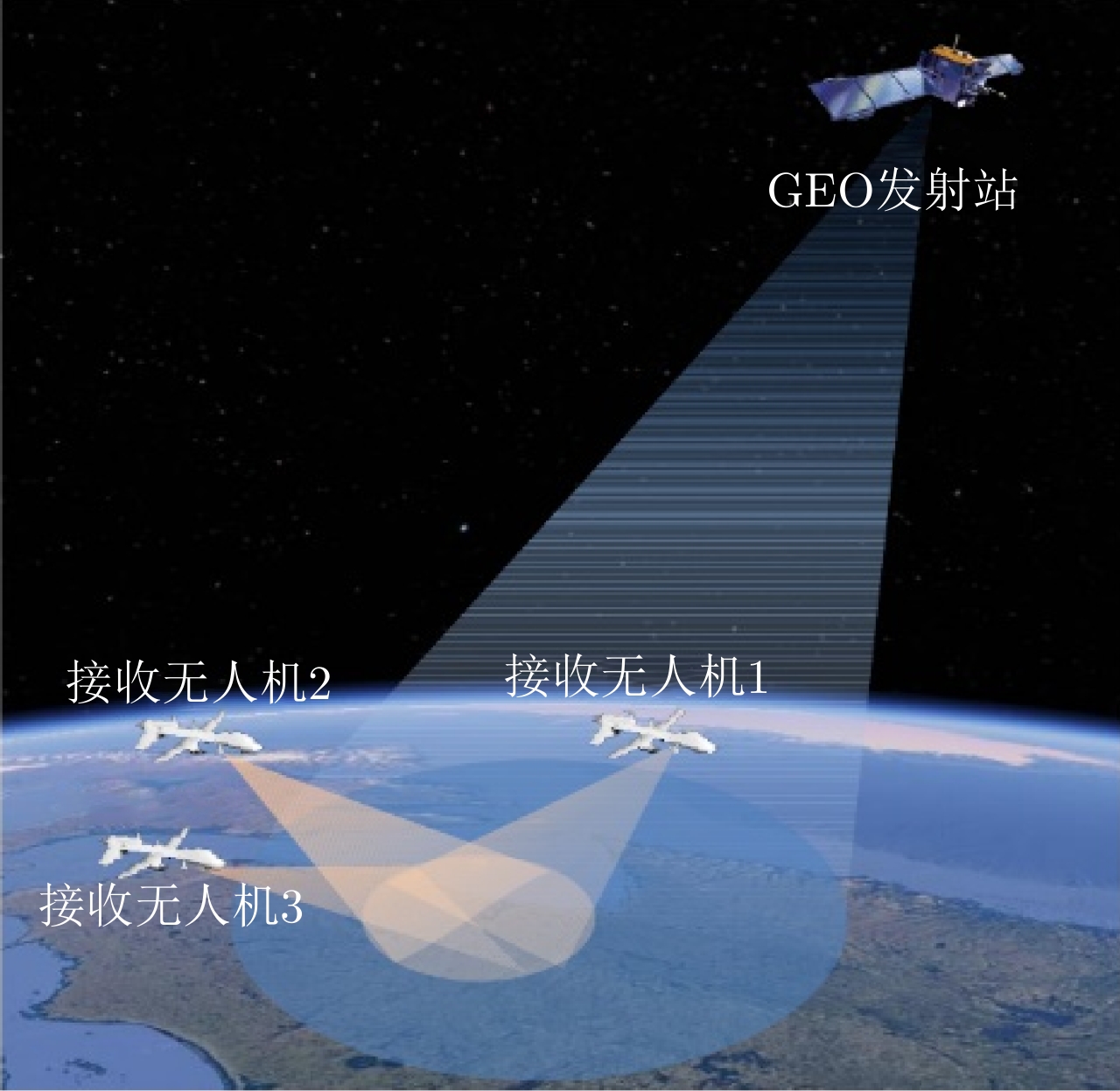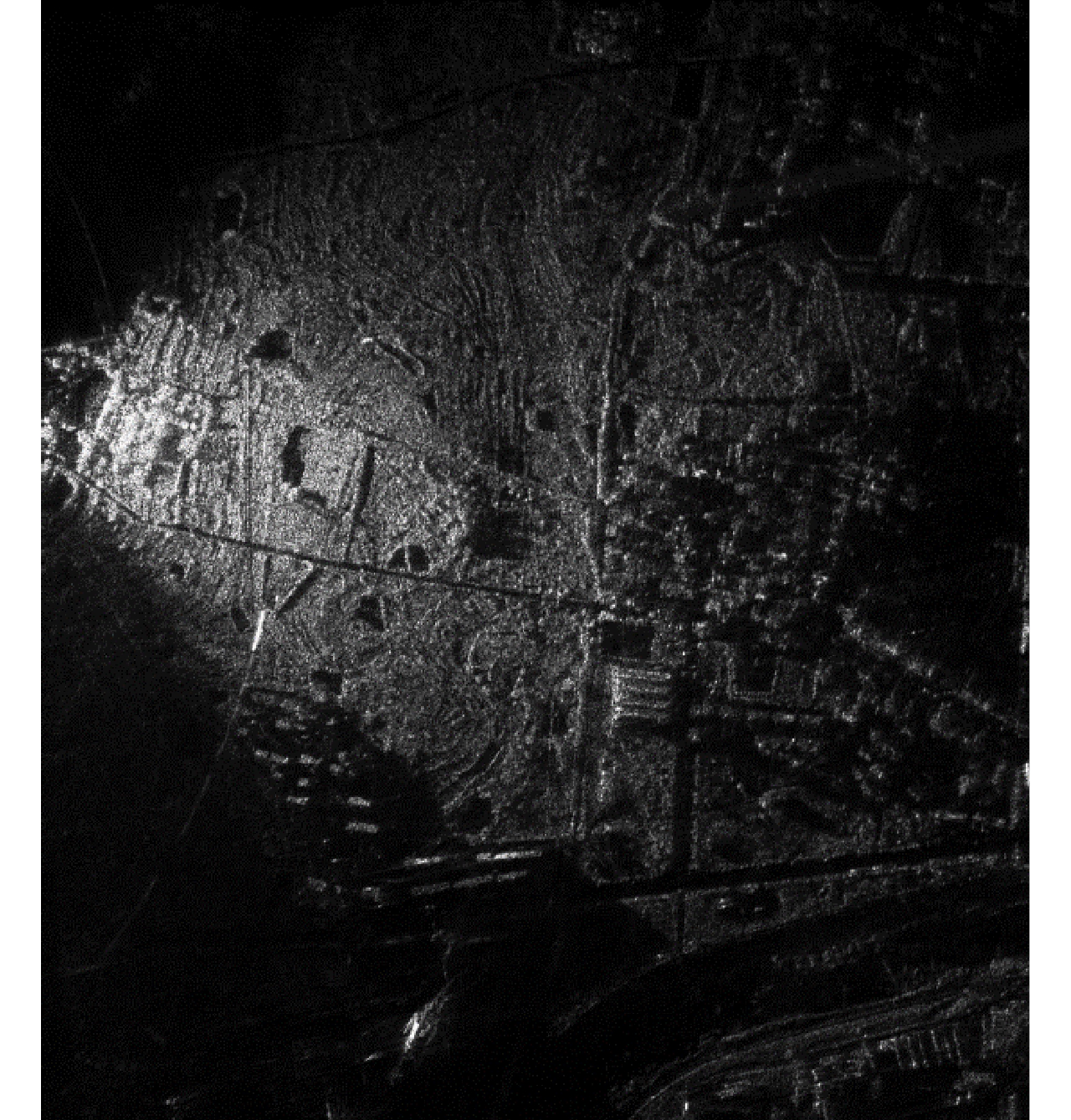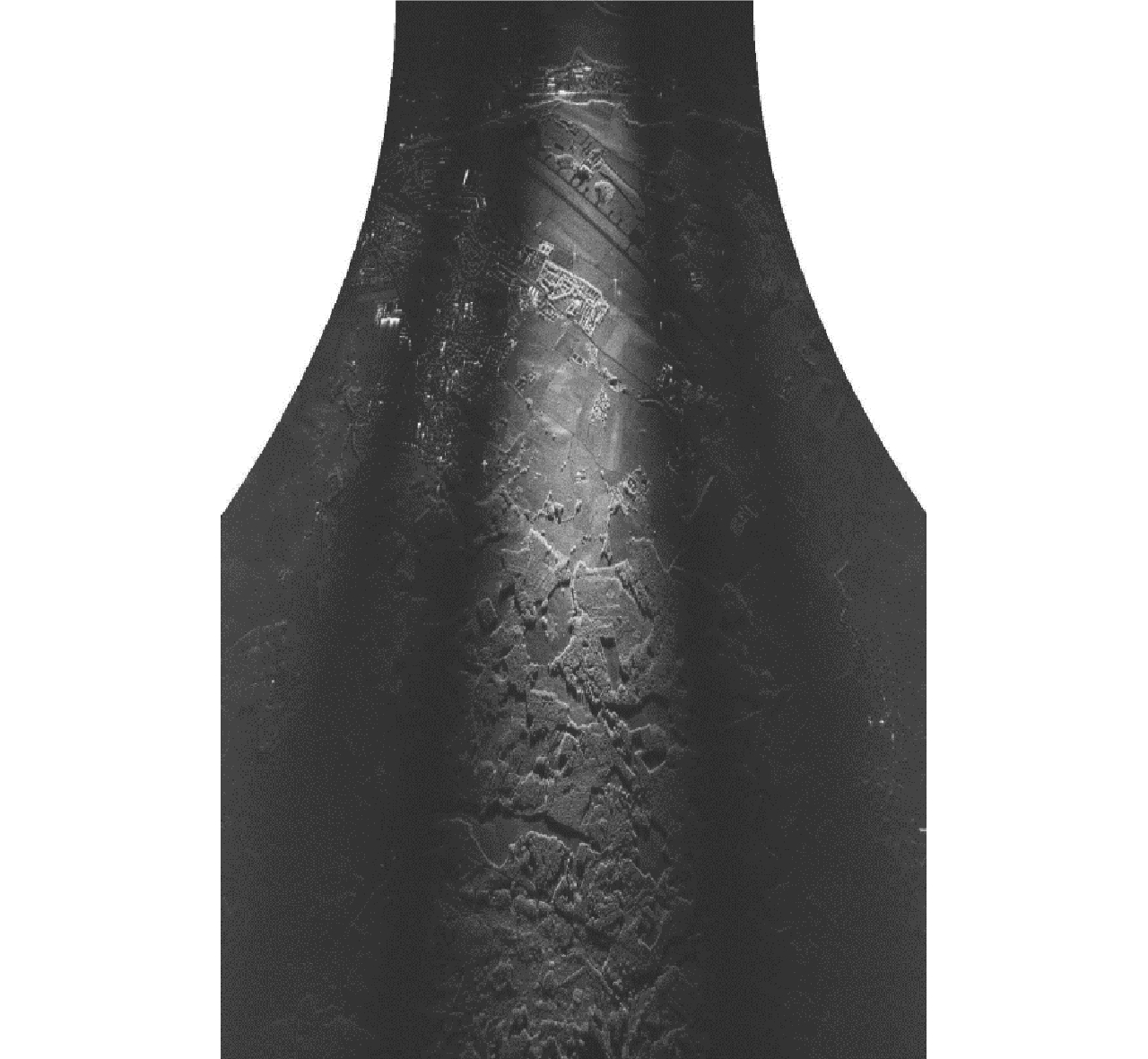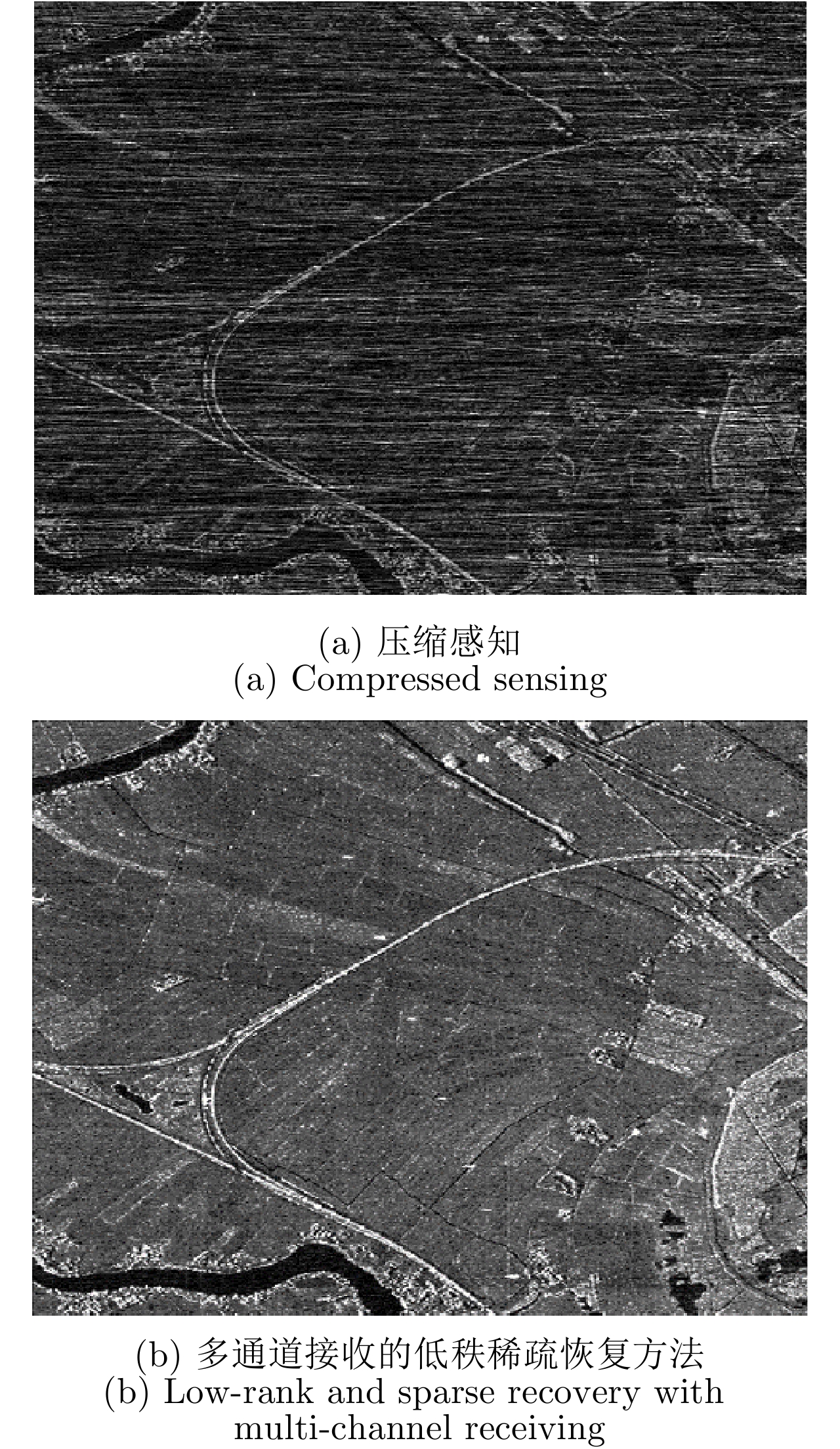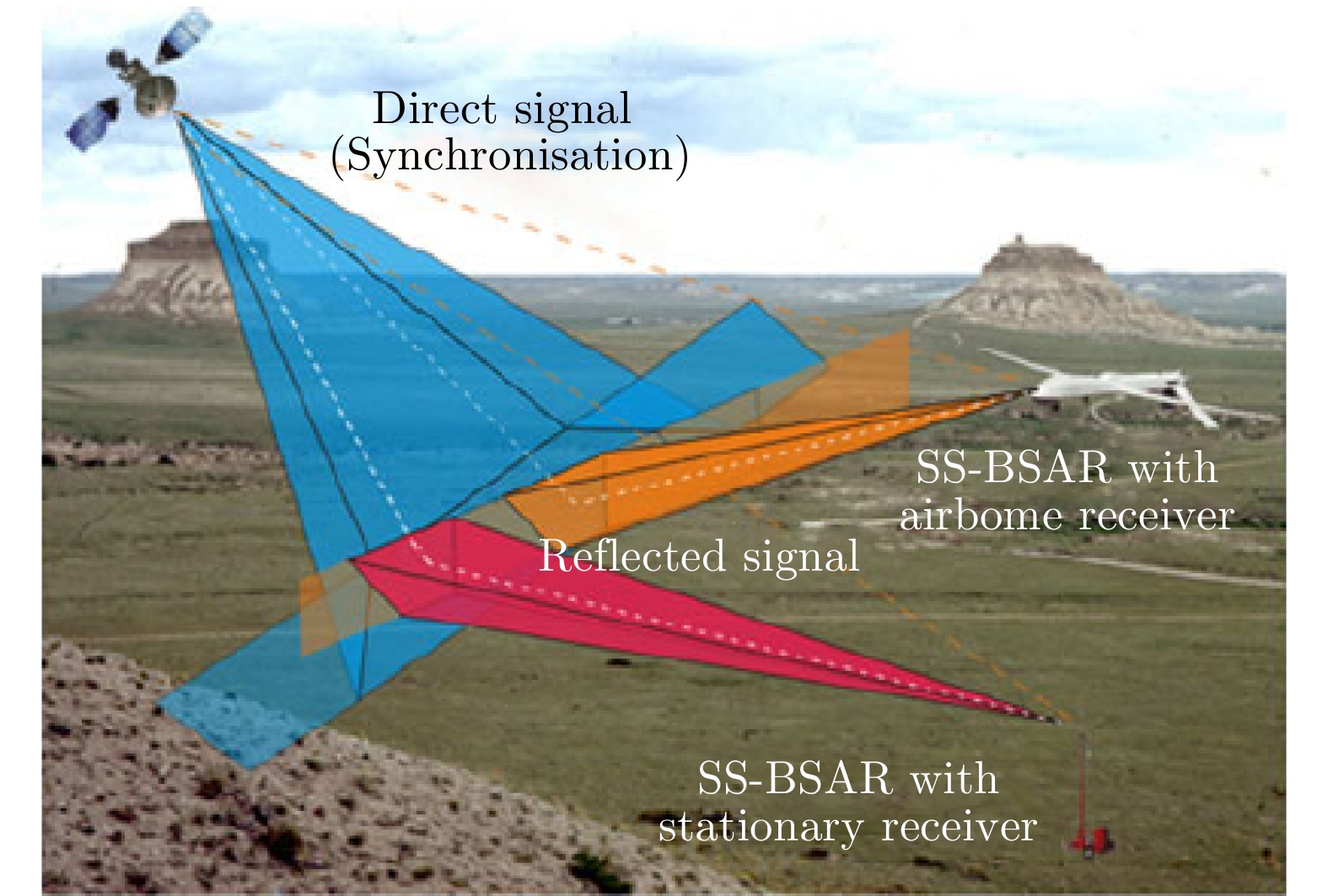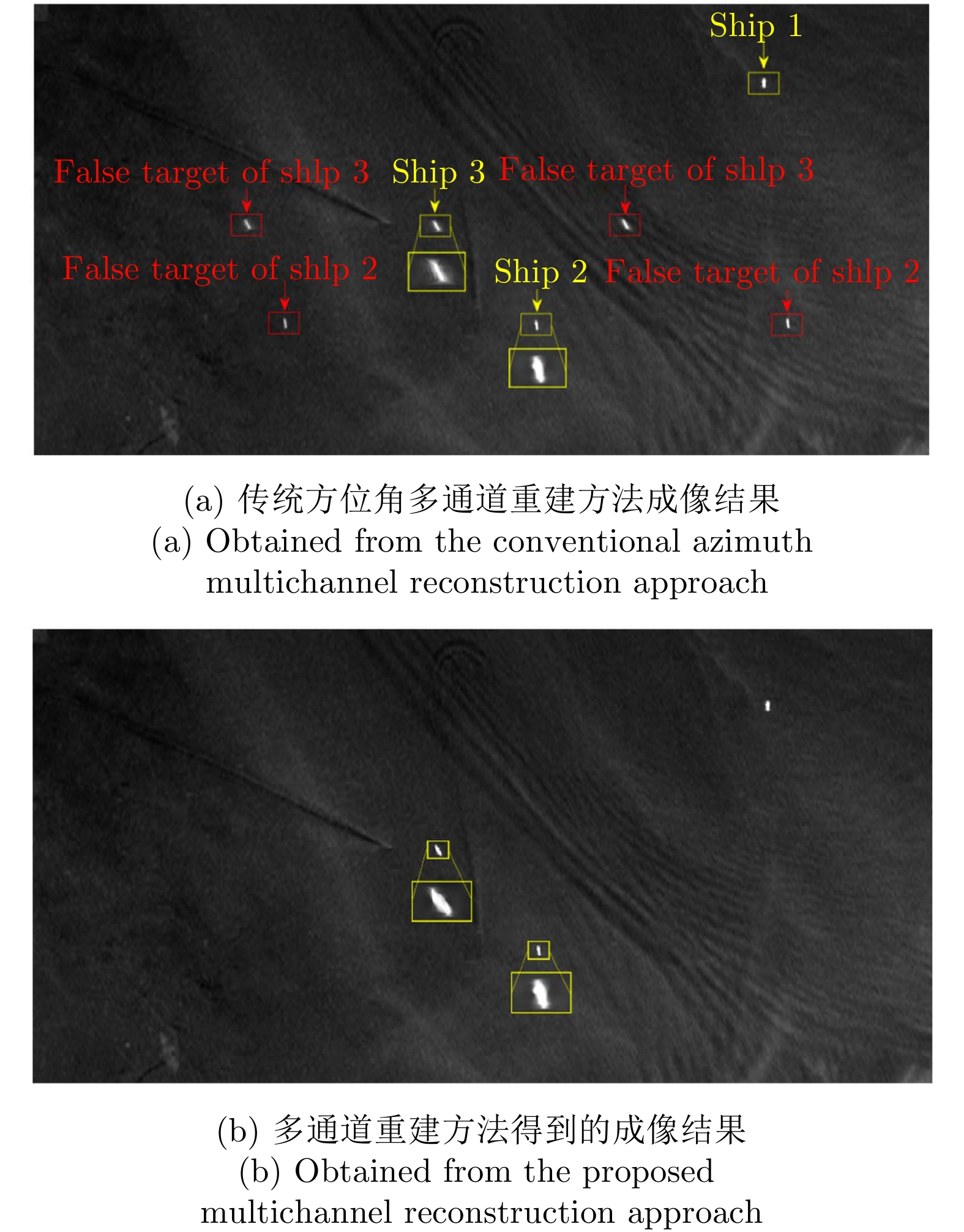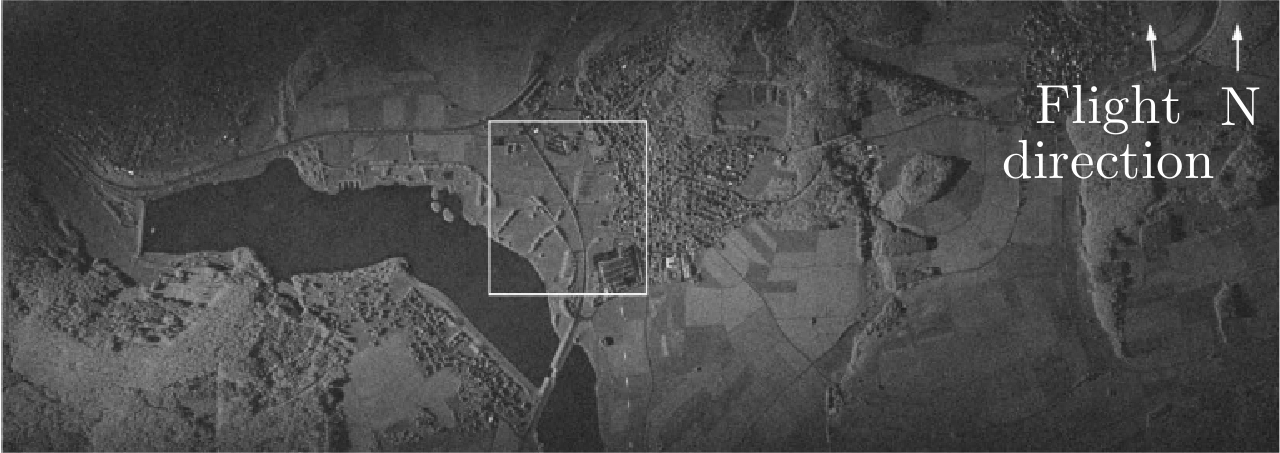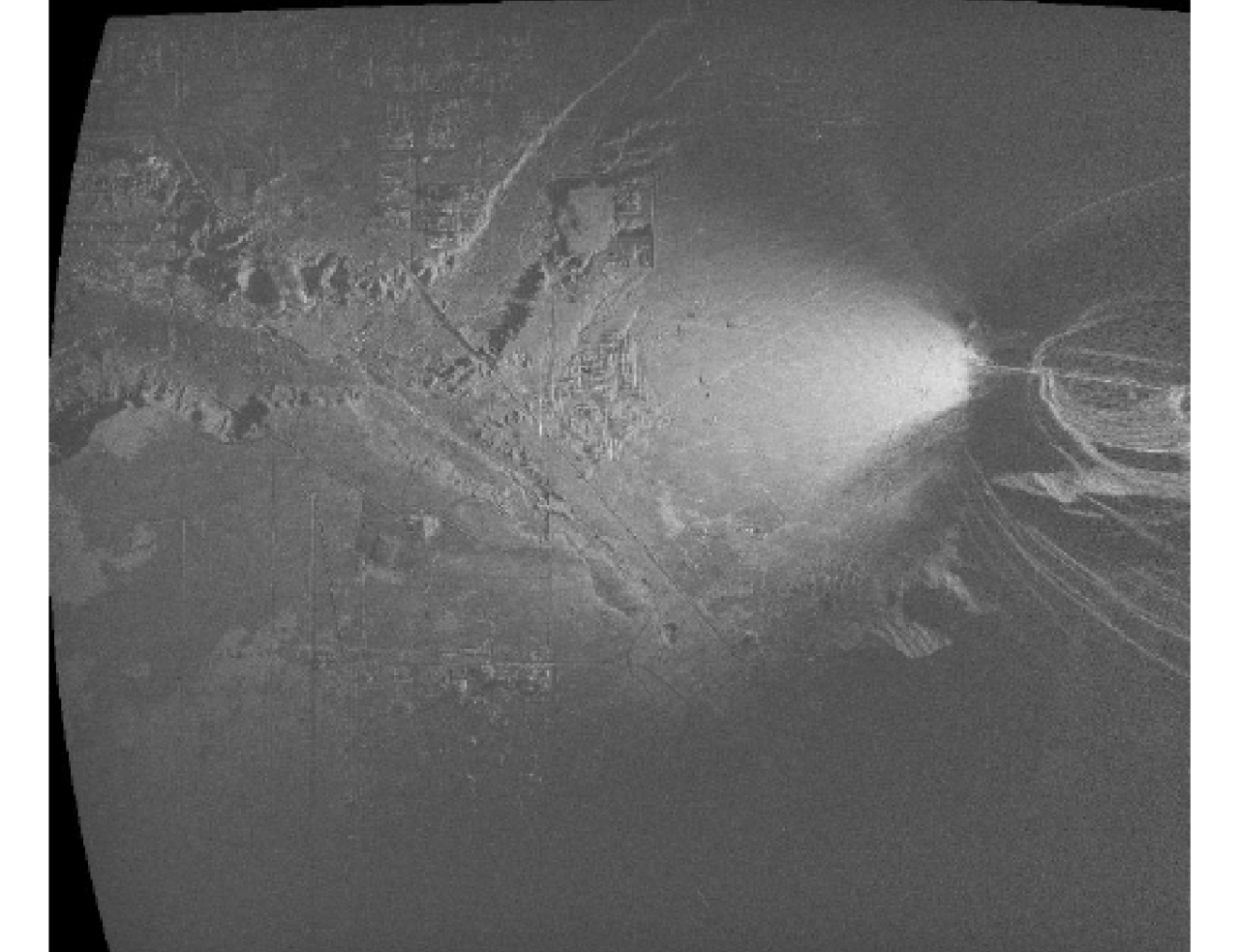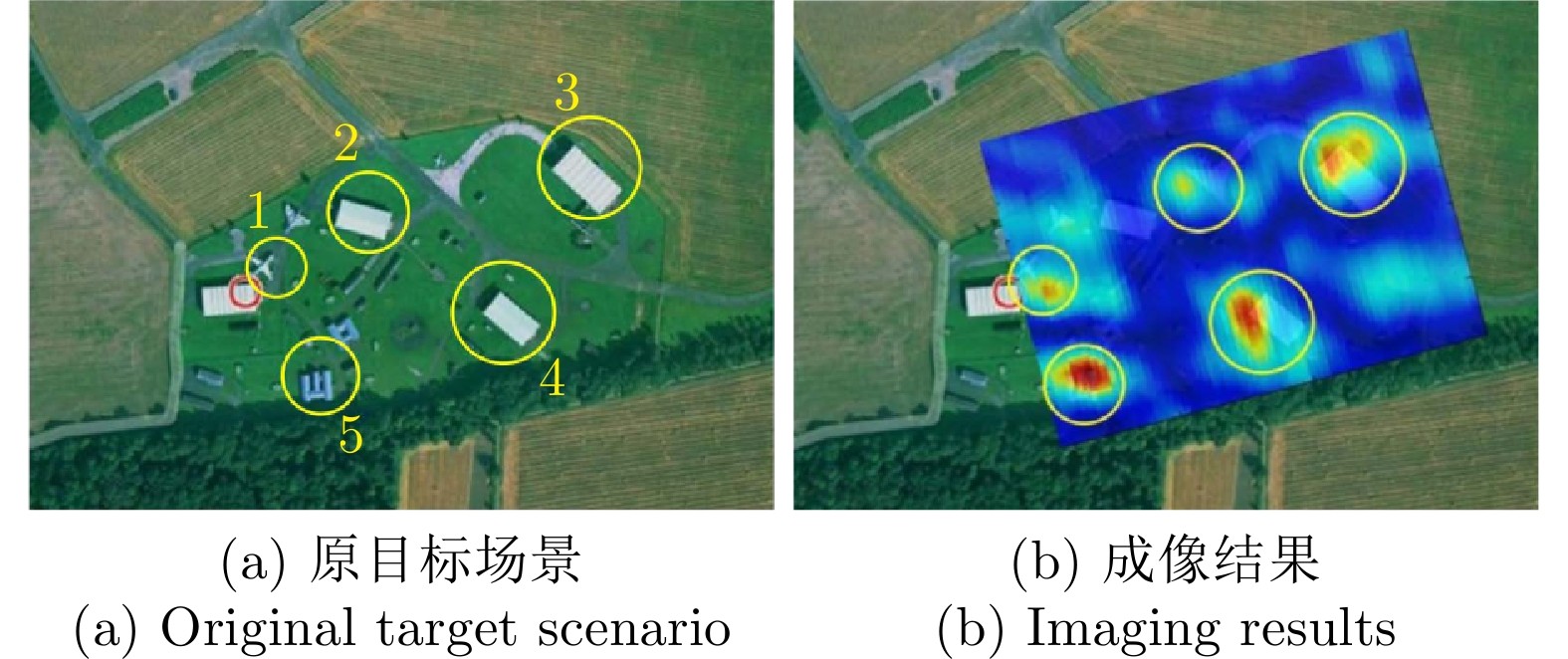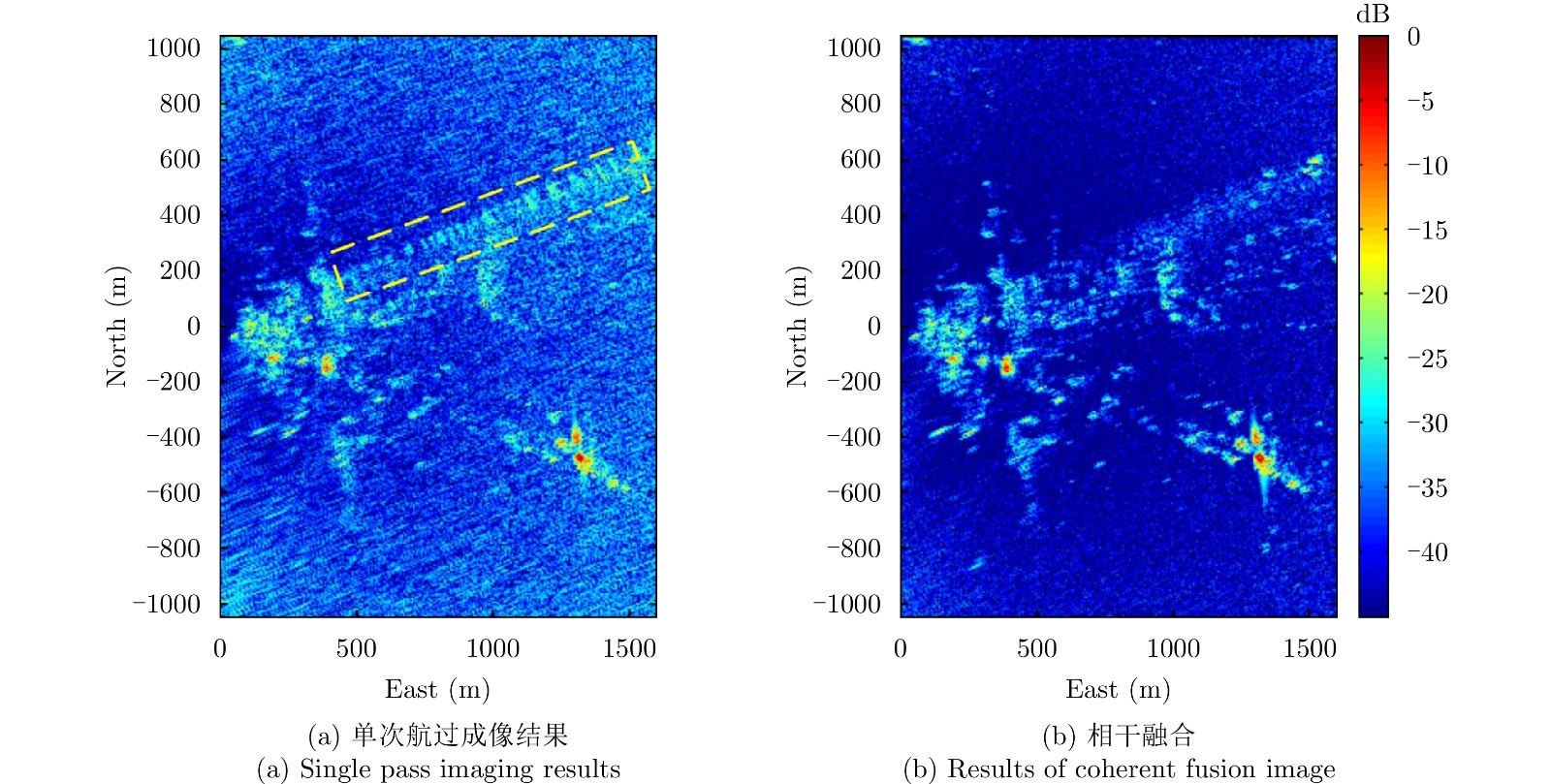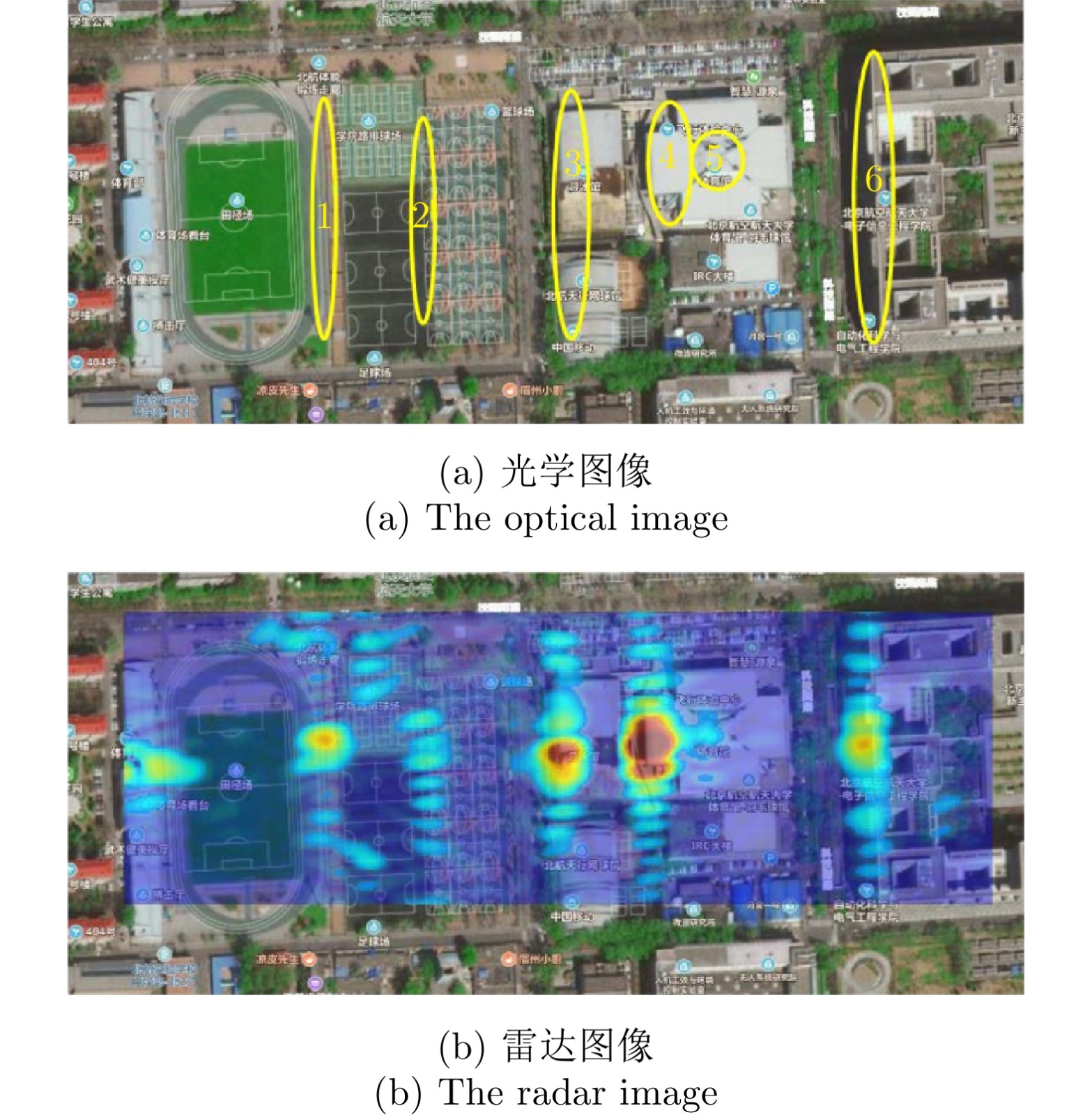| [1] |
杨建宇. 双基合成孔径雷达[M]. 北京: 国防工业出版社, 2017.
YANG Jianyu. Bistatic Synthetic Aperture Radar[M]. Beijing: National Defense Industry Press, 2017.
|
| [2] |
ZENG Tao. Bistatic SAR: State of the art and development trend[J]. Journal of Radars, 2012, 1(4): 329–341. doi: 10.3724/SP.J.1300.2012.20093 |
| [3] |
WANG R and DENG Yunkai. Bistatic SAR System and Signal Processing Technology[M]. Singapore: Springer, 2018.
|
| [4] |
CHERNIAKOV M, ZENG Tao, and PLAKIDIS E. Galileo signal-based bistatic system for avalanche prediction[C]. IGARSS 2003. 2003 IEEE International Geoscience and Remote Sensing Symposium, Toulouse, France, 2003: 784–786.
|
| [5] |
ANTONIOU M and CHERNIAKOV M. GNSS-based bistatic SAR: A signal processing view[J]. EURASIP Journal on Advances in Signal Processing, 2013, 2013(1): 98. doi: 10.1186/1687-6180-2013-98 |
| [6] |
WILLIS N J , GRIFFITHS H D. Advances in Bistatic Radar[M]. Scitech Publishing Inc, 2007.
|
| [7] |
MARTONE M, BRÄUTIGAM B, RIZZOLI P, et al. Enhancing interferometric SAR performance over sandy areas: Experience from the TanDEM-X mission[J]. IEEE Journal of Selected Topics in Applied Earth Observations and Remote Sensing, 2016, 9(3): 1036–1046. doi: 10.1109/JSTARS.2015.2418537 |
| [8] |
ZHANG Yanyan, ZHANG Heng, OU Naiming, et al. First demonstration of multipath effects on phase synchronization scheme for LT-1[J]. IEEE Transactions on Geoscience and Remote Sensing, 2020, 58(4): 2590–2604. doi: 10.1109/TGRS.2019.2952471 |
| [9] |
HOMER J, MOJARRABI B, PALMER J, et al. Non-cooperative bistatic SAR imaging system: Spatial resolution analysis[C]. 2003 IEEE International Geoscience and Remote Sensing Symposium, Toulouse, France, 2003: 1446–1448.
|
| [10] |
ZENG Tao, CHERNIAKOV M, and LONG Teng. Generalized approach to resolution analysis in BSAR[J]. IEEE Transactions on Aerospace and Electronic Systems, 2005, 41(2): 461–474. doi: 10.1109/TAES.2005.1468741 |
| [11] |
ENDER J H G. The meaning of k-space for classical and advanced SAR techniques[C]. International Symposium Physics in Signal and Image Processing, Marseille, France, 2001: 23–38.
|
| [12] |
WANG Jingen, WANG Yanfei, ZHANG Jianming, et al. Resolution calculation and analysis in bistatic SAR with geostationary illuminator[J]. IEEE Geoscience and Remote Sensing Letters, 2013, 10(1): 194–198. doi: 10.1109/LGRS.2012.2197850 |
| [13] |
HU Cheng, CHEN Zhiyang, DONG Xichao, et al. Multistatic geosynchronous SAR resolution analysis and grating lobe suppression based on array spatial ambiguity function[J]. IEEE Transactions on Geoscience and Remote Sensing, 2020, 58(9): 6020–6038. doi: 10.1109/TGRS.2020.2969573 |
| [14] |
SUN Zhichao, WU Junjie, PEI Jifang, et al. Inclined geosynchronous spaceborne–airborne bistatic SAR: Performance analysis and mission design[J]. IEEE Transactions on Geoscience and Remote Sensing, 2016, 54(1): 343–357. doi: 10.1109/TGRS.2015.2457034 |
| [15] |
SANTI F, BUCCIARELLI M, PASTINA D, et al. Spatial resolution improvement in GNSS-Based SAR using multistatic acquisitions and feature extraction[J]. IEEE Transactions on Geoscience and Remote Sensing, 2016, 54(10): 6217–6231. doi: 10.1109/TGRS.2016.2583784 |
| [16] |
JIANG Yicheng and WANG Zhuoqun. Analysis for resolution of bistatic SAR configuration with geosynchronous transmitter and UAV receiver[J]. International Journal of Antennas and Propagation, 2013, 2013: 237463. doi: 10.1155/2013/237463 |
| [17] |
邓云凯, 禹卫东, 张衡, 等. 未来星载SAR技术发展趋势[J]. 雷达学报, 2020, 9(1): 1–33. doi: 10.12000/JR20008DENG Yunkai, YU Weidong, ZHANG Heng, et al. Forthcoming spaceborne SAR development[J]. Journal of Radars, 2020, 9(1): 1–33. doi: 10.12000/JR20008 |
| [18] |
CUMMING I G and WONG F H. Digital Signal Processing of Synthetic Aperture Radar Data: Algorithms and Implementation[M]. Boston: Artech House, 2004.
|
| [19] |
SOUMEKH M. Synthetic Aperture Radar Signal Processing with MATLAB Algorithms[M]. New York: Wiley, 1999.
|
| [20] |
孙稚超. 基于GEO辐射源的星机SAR成像理论与方法研究[D]. [博士论文], 电子科技大学, 2017.
SUN Zhichao. Research on the imaging theory and algorithms of geosynchronous spaceborne-airborne bistatic SAR[D]. [Ph. D. dissertation], University of Electronic Science and Technology of China, 2017.
|
| [21] |
GEBHARDT U, LOFFELD O, NIES H, et al. Bistatic airborne/spaceborne hybrid experiment: Basic considerations[C]. SPIE 5978, Sensors, Systems, and Next-Generation Satellites IX, Bruges, Belgium, 2005.
|
| [22] |
周鹏. 星机双基地SAR系统总体与同步技术研究[D]. [博士论文], 电子科技大学, 2008.
ZHOU Peng. System design and synchronization technique of spaceborne/airborne hybrid bistatic synthetic aperture radar[D]. [Ph. D. dissertation], University of Electronic Science and Technology of China, 2008.
|
| [23] |
SUN Zhichao, WU Junjie, YANG Jianyu, et al. Path planning for GEO-UAV bistatic SAR using constrained adaptive multiobjective differential evolution[J]. IEEE Transactions on Geoscience and Remote Sensing, 2016, 54(11): 6444–6457. doi: 10.1109/TGRS.2016.2585184 |
| [24] |
LIU Qi, LI Qiang, YU Weidong, et al. Automatic building detection for multi-aspect SAR images based on the variation features[J]. Remote Sensing, 2022, 14(4): 1409. doi: 10.3390/rs14061409 |
| [25] |
安洪阳. 基于高轨照射源的双基SAR成像与动目标检测技术研究[D]. [博士论文], 电子科技大学, 2020.
AN Hongyang. Research on imaging and moving target detection technology of bistatic SAR with geosynchronous illuminator[D]. [Ph. D. dissertation], University of Electronic Science and Technology of China, 2020.
|
| [26] |
RODRIGUEZ-CASSOLA M, PRATS P, SCHULZE D, et al. First bistatic spaceborne SAR experiments with TanDEM-X[J]. IEEE Geoscience and Remote Sensing Letters, 2012, 9(1): 33–37. doi: 10.1109/LGRS.2011.2158984 |
| [27] |
CUI Chang, DONG Xichao, and HU Cheng. Performance analysis and configuration design of geosynchronous spaceborne-airborne bistatic moving target indication system[C]. IGARSS 2020 - 2020 IEEE International Geoscience and Remote Sensing Symposium, Waikoloa, USA, 2020; 6559–6562.
|
| [28] |
MAO Deqing, ZHANG Yongchao, PEI Jifang, et al. Forward-looking geometric configuration optimization design for spaceborne-airborne multistatic synthetic aperture radar[J]. IEEE Journal of Selected Topics in Applied Earth Observations and Remote Sensing, 2021, 14: 8033–8047. doi: 10.1109/JSTARS.2021.3103802 |
| [29] |
GRAZIANO M D and D’ERRICO M. Novel constellation design method for spaceborne/airborne bistatic SAR systems[J]. IEEE Transactions on Aerospace and Electronic Systems, 2014, 50(3): 2082–2095. doi: 10.1109/TAES.2014.130161 |
| [30] |
DONG Xichao, CUI Chang, LI Yuanhao, et al. Geosynchronous spaceborne-airborne bistatic moving target indication system: Performance analysis and configuration design[J]. Remote Sensing, 2020, 12(11): 1810. doi: 10.3390/rs12111810 |
| [31] |
SUN Zhichao, YEN G G, WU Junjie, et al. Mission planning for energy-efficient passive UAV radar imaging system based on substage division collaborative search[J]. IEEE Transactions on Cybernetics, 2023, 53(1): 275–288. doi: 10.1109/TCYB.2021.3090662 |
| [32] |
WANG Yuekun, LI Zhenfang, ZHANG Jinqiang, et al. Ground resolution characteristic and orbital configuration analysis for GEO-LEO BiSAR[J]. Systems Engineering and Electronics, 2017, 39(5): 996–1001. doi: 10.3969/j.issn.1001-506X.2017.05.07 |
| [33] |
MASSONNET D. Capabilities and limitations of the interferometric cartwheel[J]. IEEE Transactions on Geoscience and Remote Sensing, 2001, 39(3): 506–520. doi: 10.1109/36.911109 |
| [34] |
HAO Jigang and ZHANG Yulin. Formation optimized design for the height measurement of InSAR using distributed micro-satellites[J]. Journal of Astronautics, 2006, 27(4): 654–658, 669. doi: 10.3321/j.issn:1000-1328.2006.04.017 |
| [35] |
HUANG Haifeng, DENG Yong, and LIANG Dianlong. A formation design approach of the distributed spaceborne InSAR based on height-measure optimal accuracy value[J]. Journal of National University of Defense Technology, 2005, 27(4): 85–90. doi: 10.3969/j.issn.1001-2486.2005.04.020 |
| [36] |
HE Feng, LIANG Diannong, and DONG Zhen. Height-measure accuracy of InSAR in spaceborne parasitic SAR system and flying formation design[J]. Journal of Astronautics, 2005, 26(4): 455–460. doi: 10.3321/j.issn:1000-1328.2005.04.014 |
| [37] |
CHEN Wenwen, SHAO Xiaowei, and DUAN Dengping. Formation design of distributed satellites InSAR based on DEM and GMTI[J]. Aerospace Shanghai, 2012, 29(1): 12–18, 46. doi: 10.3969/j.issn.1006-1630.2012.01.003 |
| [38] |
WU Shenggang, QIAN Shan, TAN Wei, et al. Research on the flying-around angle design and orbit control for distributed InSAR satellites[J]. Journal of Astronautics, 2013, 34(9): 1224–1230. doi: 10.3873/j.issn.1000-1328.2013.09.007 |
| [39] |
HU Cheng, CHEN Zhiyang, and DONG Xichao. Formation design and performance analysis for distributed geosynchronous SAR[J]. Journal of Nanjing University of Information Science and Technology: Natural Science Edition, 2020, 12(2): 236–245. doi: 10.13878/j.cnki.jnuist.2020.02.012 |
| [40] |
MOREIRA A and HUANG Yonghong. Airborne SAR processing of highly squinted data using a chirp scaling approach with integrated motion compensation[J]. IEEE Transactions on Geoscience and Remote Sensing, 1994, 32(5): 1029–1040. doi: 10.1109/36.312891 |
| [41] |
LI F K, HELD D N, CURLANDER J C, et al. Doppler parameter estimation for spaceborne synthetic-aperture radars[J]. IEEE Transactions on Geoscience and Remote Sensing, 1985, GE-23(1): 47–56. doi: 10.1109/TGRS.1985.289499 |
| [42] |
WU Yuan, SUN Guangcai, YANG Chun, et al. Processing of very high resolution spaceborne sliding spotlight SAR data using velocity scaling[J]. IEEE Transactions on Geoscience and Remote Sensing, 2016, 54(3): 1505–1518. doi: 10.1109/TGRS.2015.2481923 |
| [43] |
SUN Guangcai, WU Yuan, YANG Jun, et al. Full-aperture focusing of very high resolution spaceborne-squinted sliding spotlight SAR data[J]. IEEE Transactions on Geoscience and Remote Sensing, 2017, 55(6): 3309–3321. doi: 10.1109/TGRS.2017.2669205 |
| [44] |
HUANG Lijia, QIU Xiaolan, HU Donghui, et al. Focusing of medium-earth-orbit SAR With advanced nonlinear chirp scaling algorithm[J]. IEEE Transactions on Geoscience and Remote Sensing, 2011, 49(1): 500–508. doi: 10.1109/TGRS.2010.2053211 |
| [45] |
ZHAO Bingji, QI Xiangyang, DENG Yukai, et al. Accurate fourth-order Doppler parameter estimation approach for geosynchronous SAR[C]. EUSAR 2012; 9th European Conference on Synthetic Aperture Radar, Nuremberg, Germany, 2012: 615–618.
|
| [46] |
ZHANG Qianghui, WU Junjie, LI Zhongyu, et al. PFA for bistatic forward-looking SAR mounted on high-speed maneuvering platforms[J]. IEEE Transactions on Geoscience and Remote Sensing, 2019, 57(8): 6018–6036. doi: 10.1109/TGRS.2019.2903878 |
| [47] |
TANG Shiyang, GUO Ping, ZHANG Linrang, et al. Modeling and precise processing for spaceborne transmitter/missile-borne receiver SAR signals[J]. Remote Sensing, 2019, 11(3): 346. doi: 10.3390/rs11030346 |
| [48] |
WU Junjie, LI Zhongyu, HUANG Yulin, et al. A generalized omega-K algorithm to process translationally variant bistatic-SAR data based on two-dimensional stolt mapping[J]. IEEE Transactions on Geoscience and Remote Sensing, 2014, 52(10): 6597–6614. doi: 10.1109/TGRS.2014.2299069 |
| [49] |
SUN Zhichao, CHEN Tianfu, SUN Huarui, et al. A novel frequency-domain focusing method for geosynchronous low-earth-orbit bistatic SAR in sliding-spotlight mode[J]. Remote Sensing, 2022, 14(13): 3178. doi: 10.3390/rs14133178 |
| [50] |
SUN Zhichao, WU Junjie, LI Zhongyu, et al. Geosynchronous spaceborne-airborne bistatic SAR data focusing using a novel range model based on one-stationary equivalence[J]. IEEE Transactions on Geoscience and Remote Sensing, 2021, 59(2): 1214–1230. doi: 10.1109/TGRS.2020.3002900 |
| [51] |
NEO Y L, WONG F, and CUMMING I G. A two-dimensional spectrum for bistatic SAR processing using series reversion[J]. IEEE Geoscience and Remote Sensing Letters, 2007, 4(1): 93–96. doi: 10.1109/LGRS.2006.885862 |
| [52] |
LIU Baochang, WANG Tong, WU Qisong, et al. Bistatic SAR data focusing using an omega-K algorithm based on method of series reversion[J]. IEEE Transactions on Geoscience and Remote Sensing, 2009, 47(8): 2899–2912. doi: 10.1109/TGRS.2009.2017522 |
| [53] |
ZENG Tao, HU Cheng, WU Lixin, et al. Extended NLCS algorithm of BiSAR systems with a squinted transmitter and a fixed receiver: Theory and experimental confirmation[J]. IEEE Transactions on Geoscience and Remote Sensing, 2013, 51(10): 5019–5030. doi: 10.1109/TGRS.2013.2276048 |
| [54] |
ZENG Tao, WANG Rui, LI Feng, et al. A modified nonlinear chirp scaling algorithm for spaceborne/stationary bistatic SAR based on series reversion[J]. IEEE Transactions on Geoscience and Remote Sensing, 2013, 51(5): 3108–3118. doi: 10.1109/TGRS.2012.2219057 |
| [55] |
FOCSA A, DATCU M, and ANGHEL A. Compressed sensing-based multi-aperture focusing of spaceborne transmitter/stationary receiver bistatic SAR data[C]. 2020 IEEE Radar Conference (RadarConf20), Florence, Italy, 2020: 1–4.
|
| [56] |
ZHANG Heng, DENG Yunkai, WANG R, et al. Spaceborne/Stationary bistatic SAR imaging with TerraSAR-X as an illuminator in staring-spotlight mode[J]. IEEE Transactions on Geoscience and Remote Sensing, 2016, 54(9): 5203–5216. doi: 10.1109/TGRS.2016.2558294 |
| [57] |
WANG Wenqin and SHAO Huaizong. Azimuth-variant signal processing in high-altitude platform passive SAR with spaceborne/airborne transmitter[J]. Remote Sensing, 2013, 5(3): 1292–1310. doi: 10.3390/rs5031292 |
| [58] |
LIU Zhe, YANG Jianyu, ZHANG Xiaoling, et al. Frequency domain imaging algorithm for spaceborne/airborne hybrid bistatic SAR[C]. 2007 IEEE International Geoscience and Remote Sensing Symposium, Barcelona, Spain, 2007: 842–845.
|
| [59] |
LIU Zhe, YANG Jianyu, and ZHANG Xiaoling. Nonlinear RCM compensation method for spaceborne/airborne forward-looking bistatic SAR[C]. 2011 IEEE International Geoscience and Remote Sensing Symposium, Vancouver, Canada, 2011: 4233–4236.
|
| [60] |
LIU Zhe, LI Zhe, DAI Chunyang, et al. Efficient nonuniform fourier reconstruction for spaceborne/airborne bistatic SAR[J]. IEEE Geoscience and Remote Sensing Letters, 2014, 11(1): 191–195. doi: 10.1109/LGRS.2013.2252144 |
| [61] |
RODRIGUEZ-CASSOLA M, PRATS P, KRIEGER G, et al. Efficient time-domain image formation with precise topography accommodation for general bistatic SAR configurations[J]. IEEE Transactions on Aerospace and Electronic Systems, 2011, 47(4): 2949–2966. doi: 10.1109/TAES.2011.6034676 |
| [62] |
WU Junjie, SUN Zhichao, AN Hongyang, et al. Azimuth signal multichannel reconstruction and channel configuration design for geosynchronous spaceborne-airborne bistatic SAR[J]. IEEE Transactions on Geoscience and Remote Sensing, 2019, 57(4): 1861–1872. doi: 10.1109/TGRS.2018.2869835 |
| [63] |
AN Hongyang, WU Junjie, SUN Zhichao, et al. Azimuth ambiguity suppression for multichannel geosynchronous spaceborne-airborne bistatic SAR[C]. IGARSS 2018 - 2018 IEEE International Geoscience and Remote Sensing Symposium, Valencia, Spain, 2018: 3663–3666.
|
| [64] |
AN Hongyang, WU Junjie, TEH K C, et al. Geosynchronous spaceborne-airborne bistatic SAR imaging based on fast low-rank and sparse matrices recovery[J]. IEEE Transactions on Geoscience and Remote Sensing, 2022, 60: 5207714. doi: 10.1109/TGRS.2021.3081099 |
| [65] |
AN Hongyang, WU Junjie, HE Zhiwei, et al. Geosynchronous spaceborne-airborne multichannel bistatic SAR imaging using weighted fast factorized backprojection method[J]. IEEE Geoscience and Remote Sensing Letters, 2019, 16(10): 1590–1594. doi: 10.1109/LGRS.2019.2902036 |
| [66] |
AN Hongyang, WU Junjie, SUN Zhichao, et al. A two-step nonlinear chirp scaling method for multichannel GEO spaceborne-airborne bistatic SAR spectrum reconstructing and focusing[J]. IEEE Transactions on Geoscience and Remote Sensing, 2019, 57(6): 3713–3728. doi: 10.1109/TGRS.2018.2886817 |
| [67] |
GUO Yukun, YU Ze, LI Jingwen, et al. Focusing spotlight-mode bistatic GEO SAR with a stationary receiver using time-doppler resampling[J]. IEEE Sensors Journal, 2020, 20(18): 10766–10778. doi: 10.1109/JSEN.2020.2994752 |
| [68] |
MIAO Yuxuan, YANG Jianyu, WU Junjie, et al. Spatially variable phase filtering algorithm based on azimuth wavenumber regularization for bistatic spotlight SAR imaging under complicated motion[J]. IEEE Transactions on Geoscience and Remote Sensing, 2022, 60: 5223115. doi: 10.1109/TGRS.2021.3139965 |
| [69] |
ANTONIOU M, SAINI R, and CHERNIAKOV M. Results of a space-surface bistatic SAR image formation algorithm[J]. IEEE Transactions on Geoscience and Remote Sensing, 2007, 45(11): 3359–3371. doi: 10.1109/TGRS.2007.902124 |
| [70] |
LI Chuang, ZHANG Heng, DENG Yunkai, et al. Focusing the L-band spaceborne bistatic SAR mission data using a modified RD algorithm[J]. IEEE Transactions on Geoscience and Remote Sensing, 2020, 58(1): 294–306. doi: 10.1109/TGRS.2019.2936255 |
| [71] |
ESPETER T, WALTERSCHEID I, KLARE J, et al. Synchronization techniques for the bistatic spaceborne/airborne SAR experiment with TerraSAR-X and PAMIR[C]. 2007 IEEE International Geoscience and Remote Sensing Symposium, Barcelona, Spain, 2007: 2160–2163.
|
| [72] |
WANG Shufang and WANG Liliang. Time synchronization technology of satellite navigation and positioning system[J]. GNSS World of China, 2005, 30(2): 10–14. doi: 10.3969/j.issn.1008-9268.2005.02.003 |
| [73] |
LI Zhongyu, HUANG Chuan, WU Junjie, et al. Overview of maritime target detection techniques using GNSS-based passive radar[J]. Radar Science and Technology, 2020, 18(4): 404–416. doi: 10.3969/j.issn.1672-2337.2020.04.009 |
| [74] |
GUTTRICH G L, SIEVERS W E, and TOMLJANOVICH N M. Wide area surveillance concepts based on geosynchronous illumination and bistatic unmanned airborne vehicles or satellite reception[C]. 1997 IEEE National Radar Conference, Syracuse, USA, 1997: 126–131.
|
| [75] |
KLEMM R. Comparison between monostatic and bistatic antenna configurations for STAP[J]. IEEE Transactions on Aerospace and Electronic Systems, 2000, 36(2): 596–608. doi: 10.1109/7.845248 |
| [76] |
FANTE R L. Ground and airborne target detection with bistatic adaptive space-based radar[C]. 1999 IEEE Radar Conference. Radar into the Next Millennium, Waltham, USA, 1999: 7–11.
|
| [77] |
ZHANG Ying, XIONG Wei, DONG Xichao, et al. A novel azimuth spectrum reconstruction and imaging method for moving targets in geosynchronous spaceborne-airborne bistatic multichannel SAR[J]. IEEE Transactions on Geoscience and Remote Sensing, 2020, 58(8): 5976–5991. doi: 10.1109/TGRS.2020.2974531 |
| [78] |
ZHANG Shuangxi, LI Shaojie, LIU Yanyang, et al. A novel azimuth Doppler signal reconstruction approach for the GEO-LEO bi-static multi-channel HRWS SAR system[J]. IEEE Access, 2019, 7: 39539–39546. doi: 10.1109/ACCESS.2019.2904653 |
| [79] |
XU Wei, WEI Zhengbin, HUANG Pingping, et al. Azimuth multichannel reconstruction for moving targets in geosynchronous spaceborne-airborne bistatic SAR[J]. Remote Sensing, 2020, 12(11): 1703. doi: 10.3390/rs12111703 |
| [80] |
CUI Chang, DONG Xichao, HU Cheng, et al. An adaptive moving target indication method for GEO spaceborne-airborne bistatic SAR[C]. 2021 IEEE International Geoscience and Remote Sensing Symposium IGARSS, Brussels, Belgium, 2021: 5243–5246.
|
| [81] |
WANG Pengfei, LIU Mei, WANG Shuwen, et al. 3D velocity estimation for moving targets via geosynchronous bistatic SAR[C]. 2018 China International SAR Symposium (CISS), Shanghai, China, 2018: 1–5.
|
| [82] |
AN Hongyang, WU Junjie, TEH K C, et al. Simultaneous moving and stationary target imaging for geosynchronous spaceborne-airborne bistatic SAR based on sparse separation[J]. IEEE Transactions on Geoscience and Remote Sensing, 2021, 59(8): 6722–6735. doi: 10.1109/TGRS.2020.3025802 |
| [83] |
GOLDSTEIN R, ROSEN P, and WERNER C. ERS-1 bistatic radar images[C]. International Geoscience and Remote Sensing Symposium (IGARSS), Pasadena, USA, 1994: 1–7.
|
| [84] |
DUQUE S, LOPEZ-DEKKER P, and MALLORQUI J J. Single-pass bistatic SAR interferometry using fixed-receiver configurations: Theory and experimental validation[J]. IEEE Transactions on Geoscience and Remote Sensing, 2010, 48(6): 2740–2749. doi: 10.1109/TGRS.2010.2041063 |
| [85] |
RODRIGUEZ-CASSOLA M, BAUMGARTNER S V, KRIEGER G, et al. Bistatic TerraSAR-X/F-SAR spaceborne-airborne SAR experiment: Description, data processing, and results[J]. IEEE Transactions on Geoscience and Remote Sensing, 2010, 48(2): 781–794. doi: 10.1109/TGRS.2009.2029984 |
| [86] |
WALTERSCHEID I, ESPETER T, BRENNER A R, et al. Bistatic SAR experiments with PAMIR and TerraSAR X—Setup, processing, and image results[J]. IEEE Transactions on Geoscience and Remote Sensing, 2010, 48(8): 3268–3279. doi: 10.1109/TGRS.2010.2043952 |
| [87] |
WAHL D E and YOCKY D A. Bistatic SAR: Signal processing and image formation[R]. SAND2014-18347, 2014.
|
| [88] |
WANG Rui, LI Feng, and ZENG Tao. Bistatic SAR experiment, processing and results in spaceborne/stationary configuration[C]. 2011 IEEE CIE International Conference on Radar, Chengdu, China, 2011: 393–397.
|
| [89] |
ZENG Tao, ZHU Mao, HU Cheng, et al. Experimental results and algorithm analysis of DEM generation using bistatic SAR interferometry with stationary receiver[J]. IEEE Transactions on Geoscience and Remote Sensing, 2015, 53(11): 5835–5852. doi: 10.1109/TGRS.2015.2422303 |
| [90] |
WANG R, WANG Wei, SHAO Yunfeng, et al. First bistatic demonstration of digital beamforming in elevation with TerraSAR-X as an illuminator[J]. IEEE Transactions on Geoscience and Remote Sensing, 2016, 54(2): 842–849. doi: 10.1109/TGRS.2015.2467176 |
| [91] |
SUN Zhichao, WU Junjie, LV Zheng, et al. Spaceborne-airborne bistatic SAR experiment using GF-3 illuminator: Description, processing and results[C]. 2021 IEEE International Geoscience and Remote Sensing Symposium IGARSS, Brussels, Belgium, 2021: 2699–2702.
|
| [92] |
WU Junjie, SUN Zhichao, YANG Jianyu, et al. Spaceborne-airborne bistatic SAR using GF-3 illumination—Technology and experiment[J]. Radar Science and Technology, 2021, 19(3): 241–247. doi: 10.3969/j.issn.1672-2337.2021.03.002 |
| [93] |
KRIEGER G, MOREIRA A, FIEDLER H, et al. TanDEM-X: A satellite formation for high-resolution SAR interferometry[J]. IEEE Transactions on Geoscience and Remote Sensing, 2007, 45(11): 3317–3341. doi: 10.1109/TGRS.2007.900693 |
| [94] |
SAINI R, ZUO Rui, and CHERNIAKOV M. Development of space-surface bistatic synthetic aperture radar with GNSS trasmnitter of opportunity[C]. 2008 IEEE Radar Conference, Rome, Italy, 2008: 1–6.
|
| [95] |
ZENG Tao, ZHANG Tian, TIAN Weiming, et al. Space-surface bistatic SAR image enhancement based on repeat-pass coherent fusion with beidou-2/compass-2 as illuminators[J]. IEEE Geoscience and Remote Sensing Letters, 2016, 13(12): 1832–1836. doi: 10.1109/LGRS.2016.2614337 |
| [96] |
ZHANG Qilei, CHANG Wen’ge, ZENG Zhangfan, et al. An integrative synchronization and imaging algorithm for GNSS-based BSAR[J]. Science China Information Sciences, 2015, 58(6): 1–15. doi: 10.1007/s11432-015-5319-5 |
| [97] |
MA Hui, ANTONIOU M, and CHERNIAKOV M. Passive GNSS-based SAR imaging and opportunities using Galileo E5 signals[J]. Science China Information Sciences, 2015, 58(6): 1–11. doi: 10.1007/s11432-015-5335-5 |
| [98] |
ZHOU Xinkai, CHEN Jie, WANG Pengbo, et al. An efficient imaging algorithm for GNSS-R Bi-static SAR[J]. Remote Sensing, 2019, 11(24): 2945. doi: 10.3390/rs11242945 |




 Submit Manuscript
Submit Manuscript Peer Review
Peer Review Editor Work
Editor Work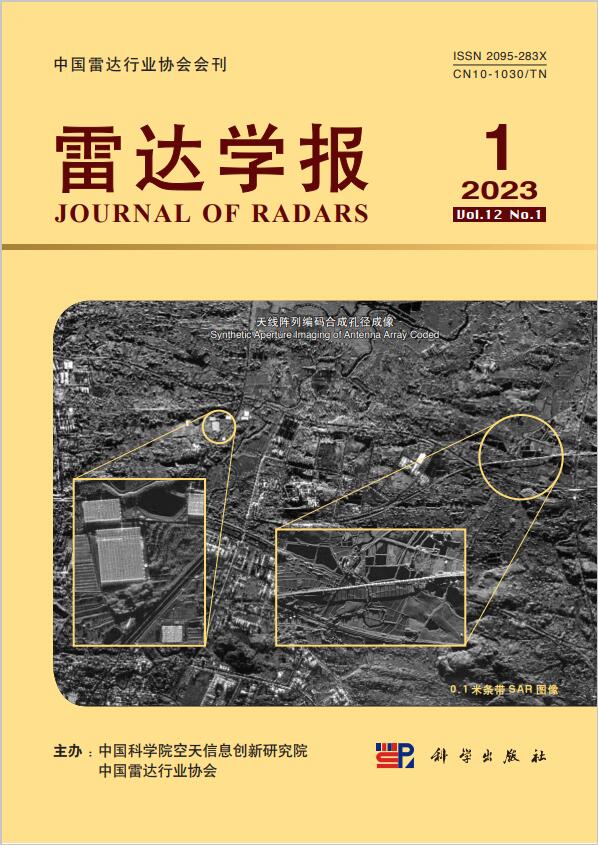





 DownLoad:
DownLoad:

